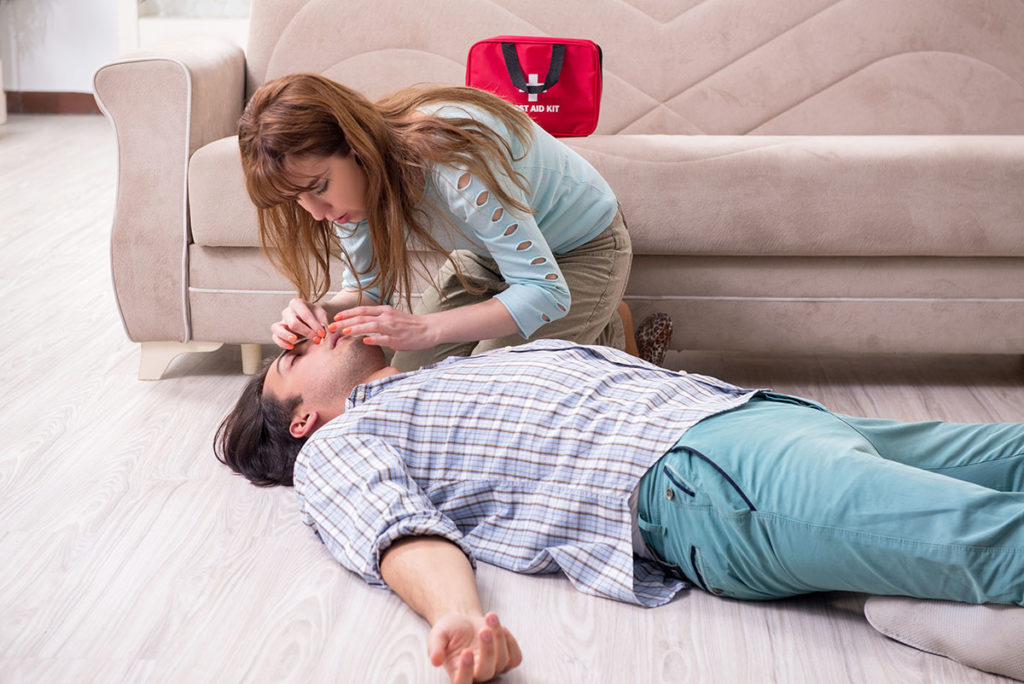Read the latest and greatest from our team
of incredible specialists.

Beach House Recovery Center » Blog » Is It Possible to Reverse an Opioid Overdose?
If someone in your household regularly uses opioid drugs such as OxyContin, Percocet or Vicodin, the fear of an accidental overdose is undoubtedly one of your foremost concerns. Opioid overdoses are one of the leading causes of injury-related death in the U.S. today. On average, 130 Americans die each day from overdosing on opioids, according to CDC estimates. How can you keep your loved one from being part of this sad statistic? Luckily, a drug called naloxone can help you reverse an opioid overdose.

Naloxone, sold under the brand name Narcan, is a lifesaving drug you should have on hand if you live with an opioid user. Most deaths from opioid overdoses happen because the user stops breathing, and naloxone can help reverse this problem by rapidly binding to opioid receptors in the brain and blocking the effects of opioid drugs.
Even if you don’t have a medical background, naloxone is designed to be easy to administer to an unconscious person. If someone you love is an opioid user, it’s smart to get a supply of naloxone and make sure everyone in your household knows where it is and how to use it. Naloxone is available from pharmacies, and depending on where you live, you might be able to get it without a prescription.
It’s rare for an opioid overdose to result in immediate death. When someone ingests more of their medication than their body can handle, it causes suppressed breathing, and the body gradually shuts down due to oxygen deprivation. It’s possible for a drug user to survive an opioid overdose if the people around them know what to do and can act quickly.
First, you should be able to recognize the signs of an overdose. Usually, the person will be unresponsive, and their skin will be clammy. They may also have a bluish tint around their lips and fingernails. Their heart rate and breathing will be much slower than normal, and you might hear a gurgling or rattling sound coming from their throat.
If you suspect an opioid overdose, the first thing you should do is to call 911. While you are waiting for help to arrive, put your loved one in the recovery position, which helps avoid choking if the victim vomits.
Next, check to see if the person is still breathing. If not, perform rescue breathing for several breaths, then tilt their head back and administer a single dose of naloxone. Most commonly, naloxone is available in an easy-to-use nasal spray form.
If their breathing continues to be shallow, try another round of rescue breathing while waiting for the naloxone to take effect. People usually start breathing on their own within a few minutes of receiving a dose of naloxone. However, if there is no change in their condition after about five minutes, you may want to administer a second dose.
Once your loved one has resumed breathing and is conscious, stay with them until the paramedics arrive. It’s likely they will be confused and disoriented, and they may also be uncomfortable if they are experiencing any withdrawal symptoms. Calmly explain to them what happened, but do not allow them to use any other drugs. If the EMTs recommend going to the hospital, make sure you or someone else from your family accompanies them to provide support.
Though the experience of undergoing an overdose and being brought back from the brink of death is undoubtedly alarming, you may be able to use this as an opportunity to convince your loved one to seek professional addiction treatment. If they have been living with an opioid misuse disorder for years, but have been unwilling to admit to the extent of their problem, now is the time to step in and get help. Contact us at Beach House to learn more about our beautiful Florida facility and our evidence-based continuum of care.
Whether you’re researching for yourself or a loved one, Beach House can help. We understand that this is a serious time in your life and that the treatment center you choose matters. We want you to feel comfortable and empowered to make the right decision for yourself, a friend, or a family member. This is why a counselor is waiting and available to answer your questions and help put your mind at ease regarding the next steps. Many of the staff at Beach House have walked in your shoes. If you feel you’re ready or want more information about how to help a loved one, we can help today. You can also learn why we are voted the #1 rehab for addiction treatment in Florida.
We accept most major insurance plans and can verify your benefits quickly and confidentially.
We’re committed to helping you access the care you need, our admissions counselors can guide you through your coverage options and available resources.





"*" indicates required fields